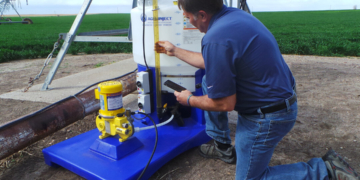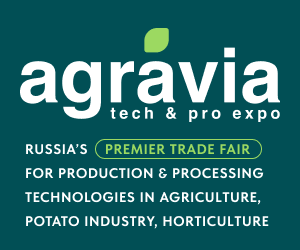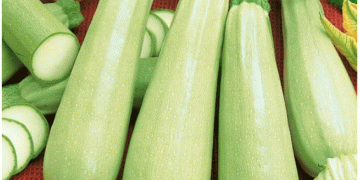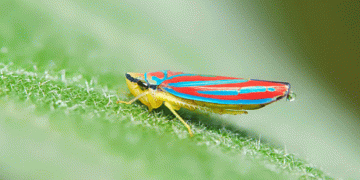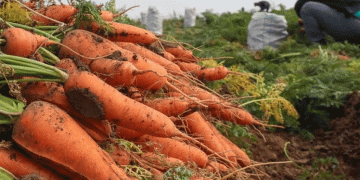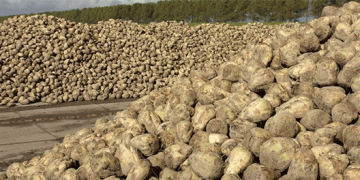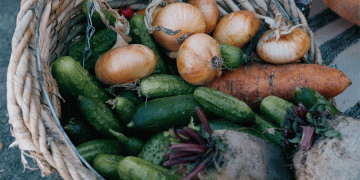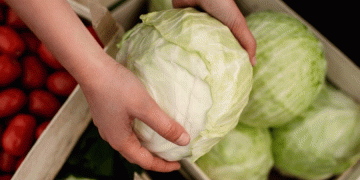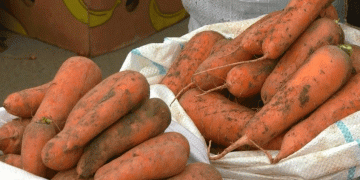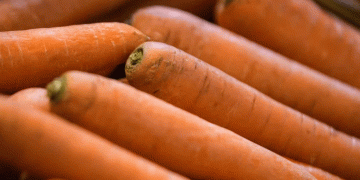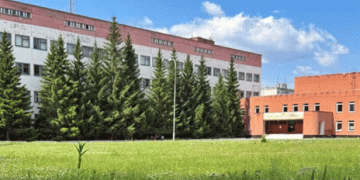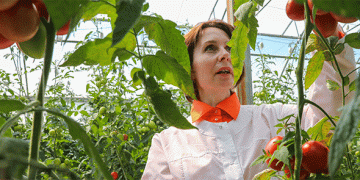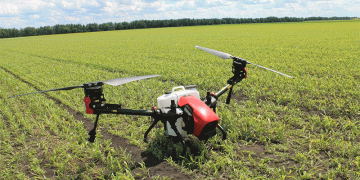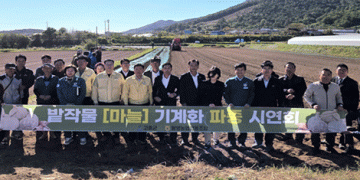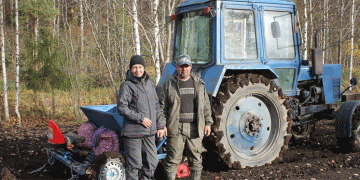A common question this time of the year is: “I have done my soil test, and it says I need to add a certain amount of nutrients. How do I determine what fertilizer to apply and how much?”
Whether you are using an organic or synthetic form of fertilizer, the same basic concepts apply for calculating how much fertilizer to add to the field. Each fertilizer product, whether it is bone meal, Sustane, urea, or another organic or synthetic product, contains a specific concentration of nutrients. These concentrations are listed on the label. Your job is to decide which fertilizer to use, and how much of it, based on your farm’s goals and soil conditions. This article will explain the process in detail and show the basic equations needed.
If you have already done this and just need a refresher, here are the steps:
- Know the nutrient concentrations in your soil
- Determine how much of each nutrient to add, in lbs/acre, with the tables in the nutrient management guide
- Decide which product to apply, based on the relative amounts of nutrients needed
- Divide the nutrient recommendation by the fraction of nutrients in the fertilizer (Nutrient lbs / 0.__ = lbs per acre of fertilizer to apply)

First, get to know fertilizer labels: Fertilizers containing nitrogen, phosphorus (phosphate), and potassium (potash) list these concentrations as N-P-K on the label. For example, a fertilizer labeled 8-2-4 (a common organic product) is 8% nitrogen (N), 2% phosphorus (P2O5) and 4% potassium (K2O). An ammonium phosphate fertilizer labeled 16-20-0 contains 16% N, 20% P, and 0% K. A fertilizer containing another nutrient like calcium or boron will also list the percentage of that nutrient on the label.
For simplicity, I will refer to phosphate (P2O5) as P and potash (K2O) as K throughout this article.
Second, determine your soil’s nutrient needs: The type of fertilizer to apply should depend on the the nutrient concentrations of your soil and the crop you planted or intend to plant. For example, if your soil is deficient in phosphorus (P) but is already very high in potassium (K), you should choose a fertilizer with a higher concentration of P and little or no K, like a 2-14-0 bone meal. It would be less wise to apply something like an 8-2-4 fertilizer in this case, because that contains little P relative to K and N.
Different crops have slightly different nutrient needs, which are listed in the Nutrient Management for Commercial Fruit and Vegetable Crops In Minnesota guide. Therefore, if you are planting several crops in the same field, it may be necessary to alter your fertilizer applications within the field depending on the crops.
Getting a soil test from a lab such as the University of Minnesota soil testing lab allows you to know the current concentrations of nutrients in your soil and how much you should add. The soil test report will list your soil’s current nutrient concentrations in Parts Per Million (ppm). Parts Per Million can be easily converted to pounds per acre (lbs/acre). Some reports also list how many lbs/acre of each nutrient to add in order to achieve adequate nutrient levels for your specific crops. Others will not, so it is good to know how to do this.
Next, calculate the amount of each nutrient needed: In cases where the soil test does not list a lb/acre recommendation, you must look it up or calculate it yourself. The amount of nutrient to apply is based on the difference between how much is there (stated on the soil test) and the optimal nutrient level for your crop(s). \To determine how much nutrient to apply based on the soil test, download and refer to the Nutrient Management for Commercial Fruit and Vegetable Crops in Minnesota.
This guide has taken some of the work out of calculating nutrient needs. It provides tables listing how much of each major macro nutrient, in pounds per acre (lbs/acre), should be applied based on soil test results. Use this guide to work through the following example:Kara’s tomatoes: Kara wants to plant tomatoes in her field next week. Kara’s soil test shows that her field’s soil has 10 ppm of P according to the Olsen test. She needs to know how much P to add in order to have optimal soil phosphorus levels for tomatoes.

Flip to Table 29 on Page 22 of the nutrient management guide linked above. According to this table, if Kara’s field contains 10 ppm of P (Olsen), she should add 100 lbs/acre of P if growing tomatoes.Next, Kara looks at the soil test again, and it indicates that her soil contains 190 ppm of potassium (K). Look at Table 30 on Page 23 of the guide. According to the table, if the field contains 190 ppm of K, 50 lbs/acre of K should be applied if growing tomatoes.
After determining how much P and K to apply, Kara still needs to know how much, if any, nitrogen to apply to her field, in order to decide which N-P-K fertilizer is best. But most soil tests do not provide a ppm concentration of N. Instead, they list the percentage of organic matter (%OM), which is correlated to soil N needs. Higher organic matter soil generally requires lower annual N inputs than a sandier soil. Kara’s report shows a %OM of 6.9%.
This is considered high. Now look at Table 28 on Page 21 of the guide. It says that for high %OM soil, 90 lbs/acre of N should be applied for tomatoes. Furthermore, it recommends applying half of this N before planting, and 1/2 a few weeks later when fruit appear. Therefore, she should apply 45 lbs/acre of N in the spring before planting.So, Kara should apply 45 lbs/acre of N, 100 lbs/acre of P, and 50 lbs/acre of K.Then, decide which product, and how much, to apply
The next step is to determine what type of fertilizer to apply, and how much, based on the N-P-K ratios needed. With the N-P-K ratios she needs (45 lbs/acre N, 100 lbs/acre P, and 50 lbs/acre K), some good choices for her would be a 4-8-4 or a 10-20-10 fertilizer because they roughly maintain those ratios.Kara is an organic farmer, so she decides to apply a 4-8-4 organic fertilizer. But for a synthetic 10-20-10 fertilizer, the same equations would apply for determining application rates.
To calculate how much product to apply: Divide the recommended nutrient amount that you calculated earlier by the percent nutrient (fractional basis) in the fertilizer. In our example, Kara would divide the P recommendation (100 lbs/acre) by the fraction of P in the bag (8% would be 0.08):Nutrient recommendation / % nutrient in the product expressed as a fraction =100 / 0.08 = 1,250 lbsThis means Kara would need to apply 1,250 lbs/acre of a 4-8-4 fertilizer in order to satisfy the phosphorus demands of her crop and soil.
She could also do this same calculation for N and K. However, since P is the most limiting nutrient in her soil at this point, it is useful to calculate it based on P demands.1,250 lbs/acre is a substantial amount of fertilizer to apply. If Kara can use a fertilizer with higher nutrient concentrations, like a 10-20-10, then she would only have to apply 500 lbs/acre of the fertilizer in order to meet her soil’s P demands. If manure is being applied to the field, this may also decrease the amount of fertilizer that must be applied.
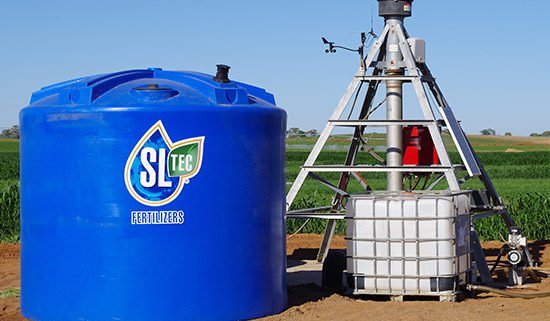
However, it is a good idea to determine the nutrient concentrations of the manure first, to see how much it is contributing to nutrient needs. Start here to find more information on manure application.
Another method: You may also choose to determine the actual amounts of each nutrient in a given weight of the fertilizer. To do this, multiply the nutrient percentage for each nutrient by the weight of fertilizer and then divide by 100.
For example, to determine the amount of actual nitrogen (N) in a 50 lb bag of 4-8-4:50 X 4/100 = 2 lb of N in a 50 lb bag50 X 8/100 = 4 lbs of P50 X 4/100 = 2 lbs of KAnother example from the guide: “If 200 lb of 8-32-16 is applied per acre, then the total nutrients applied would be 16 lb N, 64 lb P2O5, and 32 lb K2O.” Practice using the simple equations above to see if you can get the same answers.In summary, here are the basic steps to calculating fertilizer rates for fruit and vegetable crops:
- Know the nutrient concentrations in your soil
- Determine how much of each nutrient to add, in lbs/acre, with the tables in the nutrient management guide
- Decide which product to apply, based on the relative amounts of nutrients needed
- Divide the nutrient recommendation by the fraction of nutrients in the fertilizer (Nutrient lbs / 0.__ = lbs per acre of fertilizer to apply)
Annie Klodd, Extension Educator – Fruit and Vegetable Production, University of Minnesota
